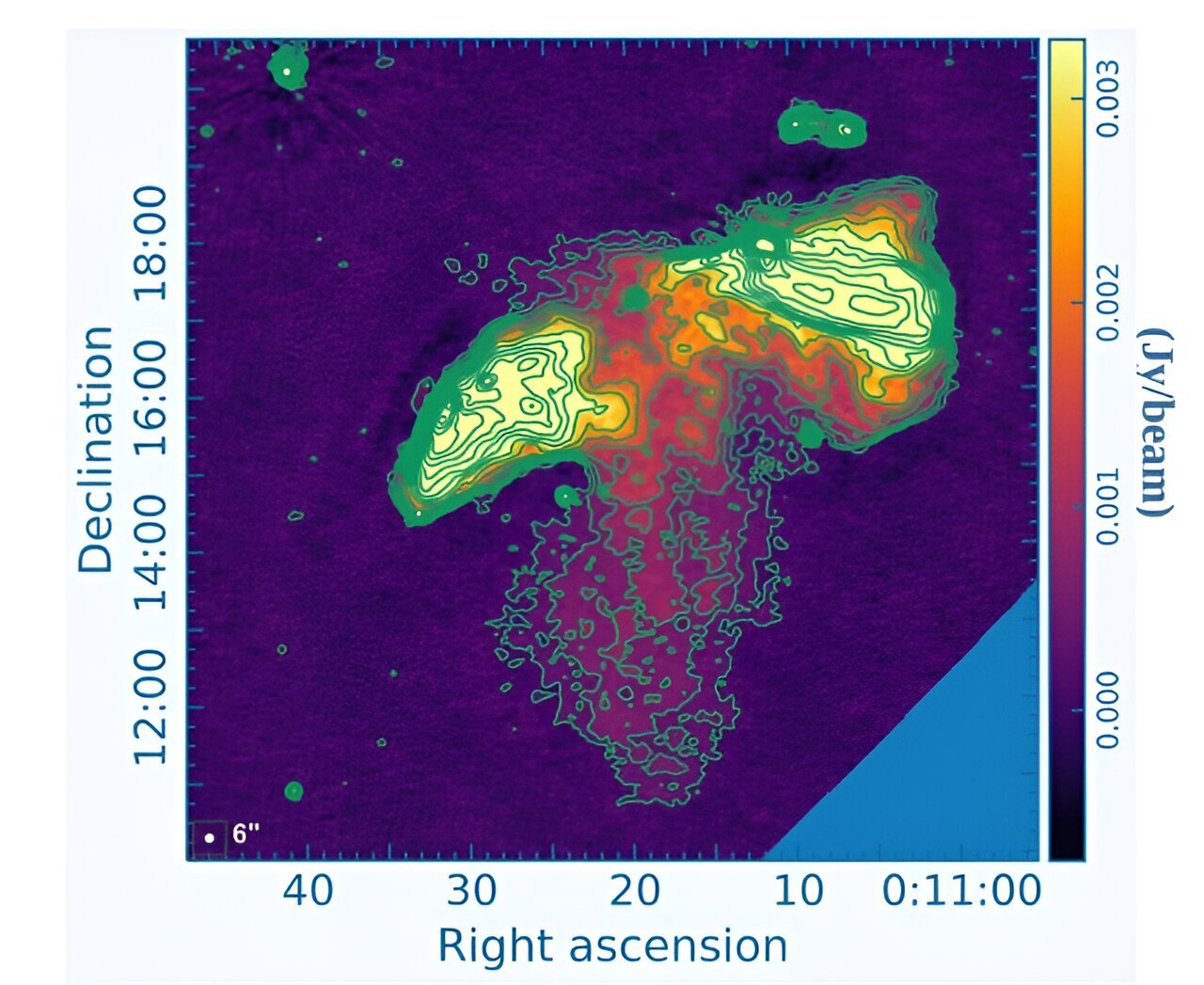
Astronomers have discovered an unusual radio galaxy with unusual structure: Why is it important?
Scientists have discovered a unique radio galaxy that may change our understanding of the evolution of these objects. A team of astronomers led by Shobha Kumar from Midnapore College in India, using the LOw-Frequency ARray (LOFAR) radio telescope array, has identified a new radio galaxy with unusual features, designated J0011+3217.
Radio galaxies are some of the brightest objects in the universe, emitting enormous amounts of radio waves from their cores. These cores often contain supermassive black holes that consume gas and dust, forming powerful plasma jets traveling at speeds close to the speed of light.
During the active phase of their life cycle, which can last up to 100 million years, radio galaxies typically have symmetrical structures that include a core, material jets, and regions where the jets interact with the intergalactic medium. However, over time, the activity of the galactic core may cease, and the galaxy enters the so-called "remnant phase" in the final stage of its life cycle.

However, J0011+3217 differs from the classical evolutionary picture. It has giant primary "lobes" that are not aligned with each other, and a one-sided secondary lobe—a feature very rarely seen in known radio galaxies. Additionally, astronomers found that the secondary lobe of J0011+3217 is unusually large, measuring 2.77 million light-years, which is about 85% of the size of the primary lobe.
Observations also indicate a slight bend in the material jet, more characteristic of wide-angle tails of powerful bent radio sources, typically associated with dominant galaxies in clusters or groups of galaxies. Therefore, scientists suggest that the newly discovered galaxy is associated with the galaxy cluster Abell 7.
The discovery of J0011+3217 challenges accepted notions of radio galaxy evolution and suggests the need for further research to fully understand these enigmatic objects. The authors of the study note that future modeling and additional observations will be crucial to uncovering the mysteries of this unusual radio galaxy.
- Related News
- James Webb captures colorful lights of young protostar
- NASA releases video simulation of flight to Pillars of Creation
- Samples taken from Moon՛s far side for first time have been removed from capsule and sent for study
- NASA assigned SpaceX the task of landing ISS from space and will pay $843 million for it
- Powerful flare occurs in active part of Sun: What effect did it have on earth?
- China makes a historic breakthrough: Chang'e-6 probe delivers soil samples from the far side of the Moon
- Most read
month
week
day
- OnePlus Pad Pro: World's first Snapdragon 8 Gen 3 tablet costs just $400 913
- Insider publishes photos of Galaxy Watch 7, Watch Ultra, Buds 3 and Buds 3 Pro 2 weeks before presentation 892
- YouTube adds several new features at once 886
- Samsung has overtaken Apple in US smartphone sales 861
- What to do if you drop your smartphone into water? 791
- How to avoid smartphone overheating in hot weather? Useful tips 741
- New fraud scheme on Telegram: Scammers steal accounts and crypto wallets 733
- WhatsApp to end support for more than 40 smartphones: What are those models? 692
- Samsung Galaxy Ring smart ring will monitor human snoring, measure body temperature 645
- What kind of opportunities are there in Armenia to do business? The guest of EconoMIX is Gagik Makaryan 642
- Archive
